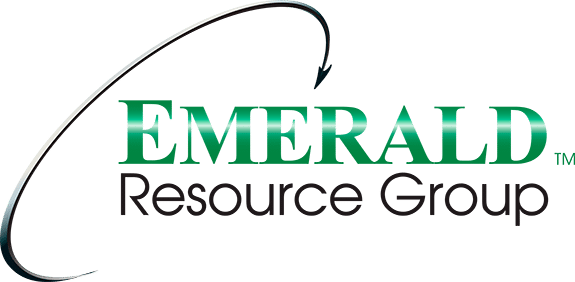In today’s technology-driven world, organizations must navigate a complex landscape of regulations, security concerns, and operational efficiencies. Effective IT governance frameworks are crucial for ensuring compliance and fostering best practices. These frameworks provide a structured approach to aligning IT strategies with business goals, managing risks, and ensuring that IT investments deliver value. This blog post delves into the key aspects of IT governance frameworks, their importance, and their role in maintaining compliance and promoting best practices.
Understanding IT Governance
IT governance is a subset of corporate governance that focuses on the management and control of IT systems and processes. It encompasses the leadership, organizational structures, and processes that ensure IT sustains and extends the organization’s strategies and objectives. At its core, IT governance aims to create value, ensure risk management, and enhance resource optimization.
The Imperative for IT Governance
- Strategic Alignment: IT governance ensures that IT initiatives align with the strategic objectives of the organization. This alignment is critical for prioritizing IT projects that support business goals, enhance operational efficiency, and deliver measurable value. Without such alignment, IT investments can become misaligned, leading to wasted resources and missed opportunities.
- Risk Management: The increasing dependence on technology has made the risk landscape more complex. IT governance frameworks provide methodologies for identifying, assessing, and mitigating IT-related risks, including cybersecurity threats, data breaches, and regulatory non-compliance. Effective risk management protects the organization’s assets and reputation.
- Regulatory Compliance: Compliance with regulations such as GDPR, HIPAA, and SOX is non-negotiable. These regulations mandate specific controls and processes for managing data and IT systems. IT governance frameworks ensure that organizations can systematically comply with these regulations, thereby avoiding legal penalties and maintaining trust with stakeholders.
- Resource Optimization: Efficient use of IT resources is a hallmark of good governance. IT governance frameworks help optimize IT budgets, improve service delivery, and enhance system performance. This involves strategic allocation of resources, eliminating redundancies, and leveraging technology to its fullest potential.
- Informed Decision-Making: Clear governance structures facilitate informed decision-making by ensuring that decisions are based on accurate information and align with the organization’s goals and risk appetite. This leads to better project outcomes and enhances the overall strategic direction of the organization.
Key IT Governance Frameworks:
Several recognized IT governance frameworks can be adopted to ensure compliance and best practices:
- COBIT (Control Objectives for Information and Related Technologies):
Developed by ISACA, COBIT provides a comprehensive framework for managing and governing enterprise IT. It emphasizes strategic alignment, value delivery, risk management, and resource optimization.
- ITIL (Information Technology Infrastructure Library):
ITIL offers best practices for IT service management (ITSM), focusing on aligning IT services with business needs. It aims to improve service delivery and customer satisfaction through structured processes.
- ISO/IEC 38500:
This international standard offers principles for effective governance of IT. It guides directors to ensure IT is used efficiently, securely, and aligns with organizational objectives.
- CMMI (Capability Maturity Model Integration):
CMMI is a process-level improvement framework that encourages productive, efficient behaviors that reduce risks in software, product, and service development.
- NIST Cybersecurity Framework:
This framework provides guidelines for managing and reducing cybersecurity risks. It is widely adopted to enhance security postures and ensure compliance with cybersecurity regulations.
Implementing IT Governance Frameworks:
Implementing an IT governance framework involves several critical steps:
- Assess Current Practices: Evaluate existing IT governance practices to identify gaps and areas for improvement. This assessment should consider current processes, controls, and the alignment of IT with business objectives.
- Define Objectives: Align IT governance objectives with the organization’s strategic goals. Define key performance indicators (KPIs) to measure the effectiveness of IT governance and track progress.
- Select a Framework: Choose an IT governance framework that fits the organization’s needs. Factors to consider include organizational size, industry, regulatory requirements, and existing IT practices.
- Develop Policies and Procedures: Create policies and procedures based on the chosen framework. Ensure these are well-documented, communicated to relevant stakeholders, and easily accessible.
- Implement Controls and Processes: Establish the necessary controls and processes to enforce IT governance. This includes setting up governance structures, defining roles and responsibilities, and ensuring accountability.
- Monitor and Review: Continuously monitor the effectiveness of IT governance practices and make adjustments as needed. Regularly review and update policies and procedures to ensure they remain relevant and effective.
Analytical Insights
1. Strategic Impact Analysis: Organizations that effectively implement IT governance frameworks often report improved strategic alignment, resulting in enhanced business performance. Studies show that organizations with mature IT governance practices achieve higher ROI on their IT investments.
2. Risk Reduction Metrics: Analyzing the impact of IT governance on risk management reveals a significant reduction in security incidents and compliance breaches. Quantitative metrics, such as the number of detected and mitigated risks, provide a clear picture of the framework’s effectiveness.
3. Resource Utilization Efficiency: Organizations can track the efficiency of resource utilization through metrics such as IT budget variance, project completion rates, and system downtime. Effective IT governance frameworks lead to better resource allocation and reduced operational costs.
4. Regulatory Compliance Scorecard: A compliance scorecard can be used to measure the organization’s adherence to regulatory requirements. This scorecard includes metrics like audit findings, compliance violations, and the time taken to address regulatory changes.
Conclusion
Effective IT governance frameworks are essential for ensuring compliance and promoting best practices within organizations. By adopting a structured approach to IT governance, organizations can align their IT initiatives with business goals, manage risks, ensure regulatory compliance, and optimize IT resources. Implementing an IT governance framework requires careful planning and continuous monitoring, but the benefits far outweigh the challenges. Prioritizing IT governance leads to greater transparency, accountability, and value from IT investments, ultimately driving organizational success.
Looking for your next IT career move? Check out our website.

